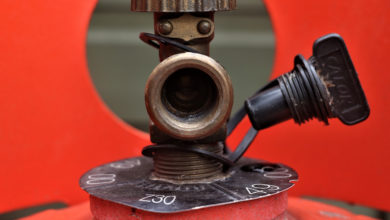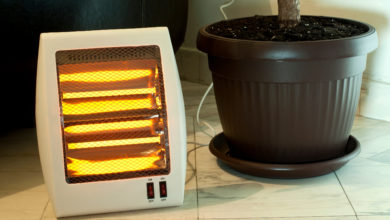What Is Geothermal Energy
Before we begin to look at how geothermal energy works, we must first know what geothermal energy is. To put it in the simplest of forms, geothermal energy is the heat energy found at the core of the earth.
About 4000 miles from the earth’s surface is a core that reaches a temperature of up to 7,600 degrees F or 4200 degrees C. The heat is so intense that it melts the rocks around it, dissolving them into what we know as magma. Since this magma is more fluid, the pent up pressure within the earth’s core pushes this magma outward, towards the earth’s surface.
Wherever there are cracks or vents, the molten magma is pushed to the earth’s surface as what we know today as volcanic explosions. However, the quantity of molten magma released in this way is far less than those trapped within the earth.
The magma still trapped within the earth heats up the rocks within. It also heats up any body of water trapped within the earth. We usually find some of these escaping to the surface as steam or into what we refer to as hot springs. There are, however, large amounts of highly heated and pressurized water still trapped within the earth. This trapped heated water is what we now refer to as geothermal reservoirs.
This is an incredible amount of heat and this energy is now being looked into as a possible replacement for the current depleting energy sources we have. Being very clean and renewable energy, this is a very laudable goal.
How is This Heat Formed?
According to scientists, part of this heat at the earth’s core was left over from the earth’s formation over 4 billion years ago. Aside from this, radioactive substances below the earth’s surface are always decomposing and this decomposition yields heat energy which adds to that which was left over from the earth’s formation, resulting in this huge heat reserve.
How Can This Heat Be Used?
To make use of this heat, the geothermal reservoirs are harvested. To tap this resource, three methods can be employed. These are direct geothermal energy, geothermal heat pump, and geothermal power plant.
Direct Geothermal Energy
This method is used to tap geothermal reservoirs that are close to the surface of the earth. The hot water in these reservoirs is pumped directly to buildings and homes through holes drilled into the reservoirs from the surface.
A heat exchanger transfers the heat from the hot water to the heating systems of the homes and buildings. After the heat exchange, the cooled water is let back into the reservoir where it is once again heated and sent back up. It’s a cycle that can go on forever.
Geothermal Heat Pump
This is a method also called ground source heat pumps. This system can convey heat from the ground and back to the ground. This method involves the use of a loop which is basically a number of pipes that run just a few feet below the earth’s surface.
These pipes carry fluids which run through the length of the pipe carrying heat to and from the house. As the fluid is heated, a heat exchanger takes the heat and a compressor sucks it in and sends it into the system put in place for cooling or heating the house.
During winter, the temperature inside the house is much lower than that under the surface of the earth so heat is pulled from just under the earth’s surface and sent to the house for the purpose of heating the house while in the summer when the temperature in the house is higher than that under the earth’s surface the process is reversed and heat is pulled from the house and exchanged for cooler air supplied through the heat exchanger.
There are four types of geothermal heat pumps. Three of these are closed loop systems while one is an open looped system.
Closed Loop Systems
Under this system, there is the horizontal, vertical and pond/lake closed systems. Generally, a closed system offers more control over the amount of water or liquid used. It is also easier to maintain. The differences in the three systems listed above have to do mainly with the way they are installed.
With a vertical closed system, which is the most popular, the pipes are installed vertically. They are great for places where land is at a premium because they require the least amount of space of the three.
Horizontal closed systems are generally more cost effective for residential use. However, they require more space for installation.
Lastly, the pond/lake closed loop system is the most cost effective of all the three types. However, it requires that a body of water be close so that the loop can be installed and coiled at least 8 feet deep in the water. This is necessary to prevent the liquid in the loop from freezing.
Open Loop System
This system is not so common. First, instead of using a loop with water or any other liquid inside it, water is pumped directly from a water source to the point where it will either be used to cool or heat a space.
Secondly, it requires assessing to a large body of water that can continue to supply water on a regular basis.
Geothermal Power Plant
This is the third method for tapping the geothermal energy and it is generally used for the generation of electricity. This is done in any of three ways using three different types of geothermal power plants. These are dry steam, flash steam, and binary cycle
Dry Steam
This is a very direct method in which the turbine which powers the electricity generator is driven by steam piped straight from the geothermal reservoir. This steam turns the turbine which in turn drives the generator, producing electricity.
Flash Steam
In this method, rather than steam, the heated water of about 148°C (300°F) to 371°C (700°F) hot is brought up by way of pipes drilled into the reservoirs. As the water is sucked up, some of it converts to steam and the steam turns the turbine which drives the generators that produce electricity.
Once the steam cools down and condenses to water, it is sent back to the reservoir where it is again heated and the process continues.
Binary Cycle
In this method, the water used is not as hot as in the other methods. Actually, it is just moderately hot. This not-so-hot water is taken through a heat exchanger which transfers the heat from the not-so-hot water to another liquid which has a much lower boiling temperature.
An example of a type of liquid used is isobutene which has a boiling point of about −6.9 °C (19.6 °F). The heat from the moderately hot water from the geothermal reservoir readily brings this liquid to a boil, converting it to steam. The steam then drives the turbine which in turn powers the generator that produces electricity.
The moderately hot water which is now cooled is sent back for reheating and reuse. The same process happens to the second liquid which also condenses back to liquid and is sent back to the heat exchanger to be reheated and converted again to steam and the cycle continues.
Conclusion
Currently, geothermal reservoirs are located only in certain places around the world, making those places best suited for geothermal energy use. However, a new system called Enhanced Geothermal System (EGS) is currently being developed.
In this system, rather than only tap geothermal energy from existing reservoirs, new reservoirs will be created by having cold water pumped from the earth’s surface deep into the earth’s core to create a body of heated water from which geothermal energy can be tapped.





